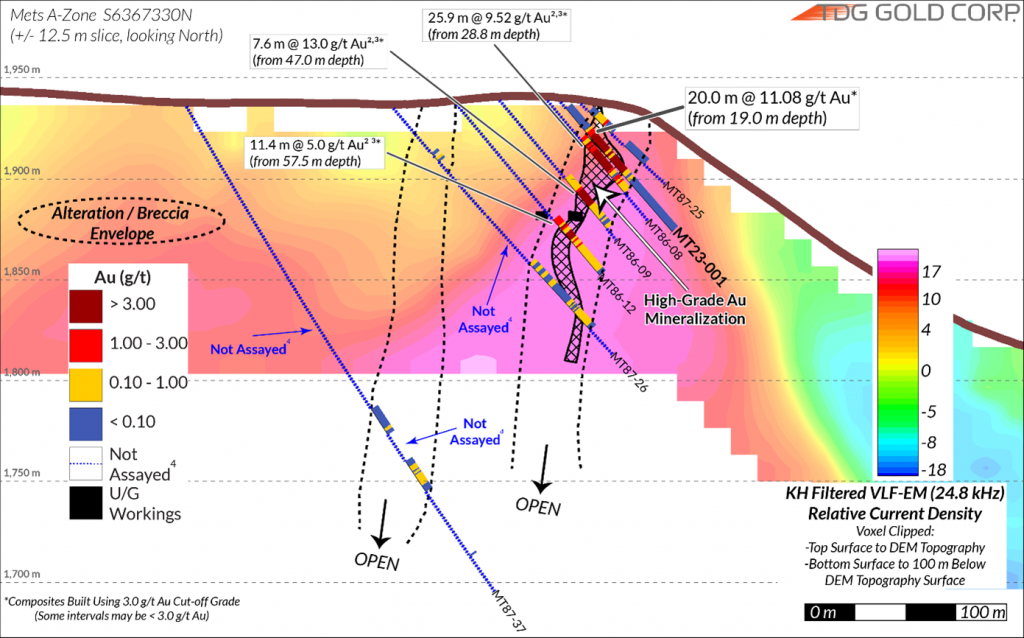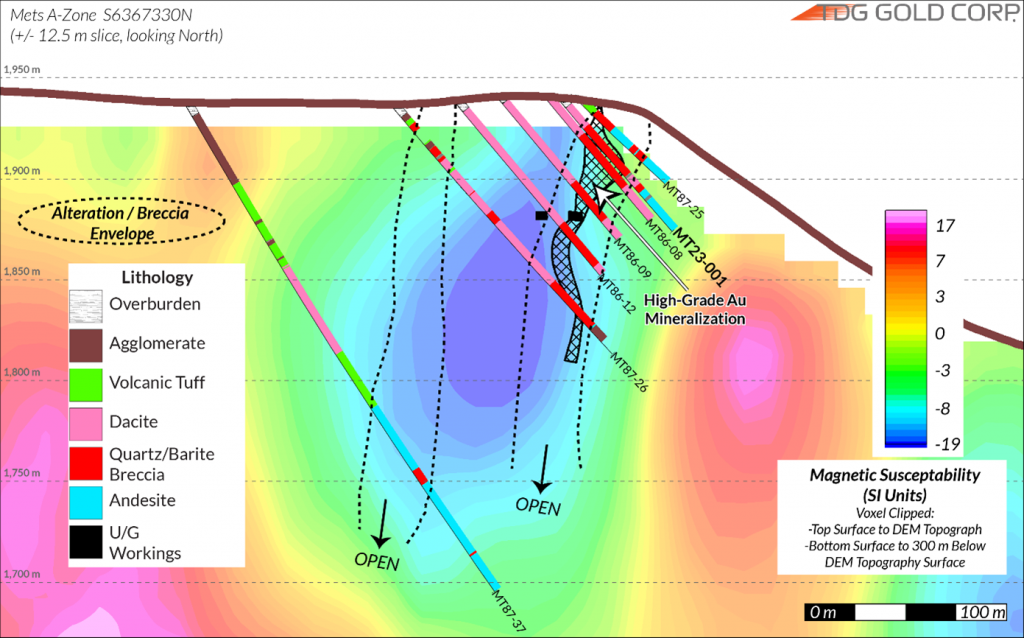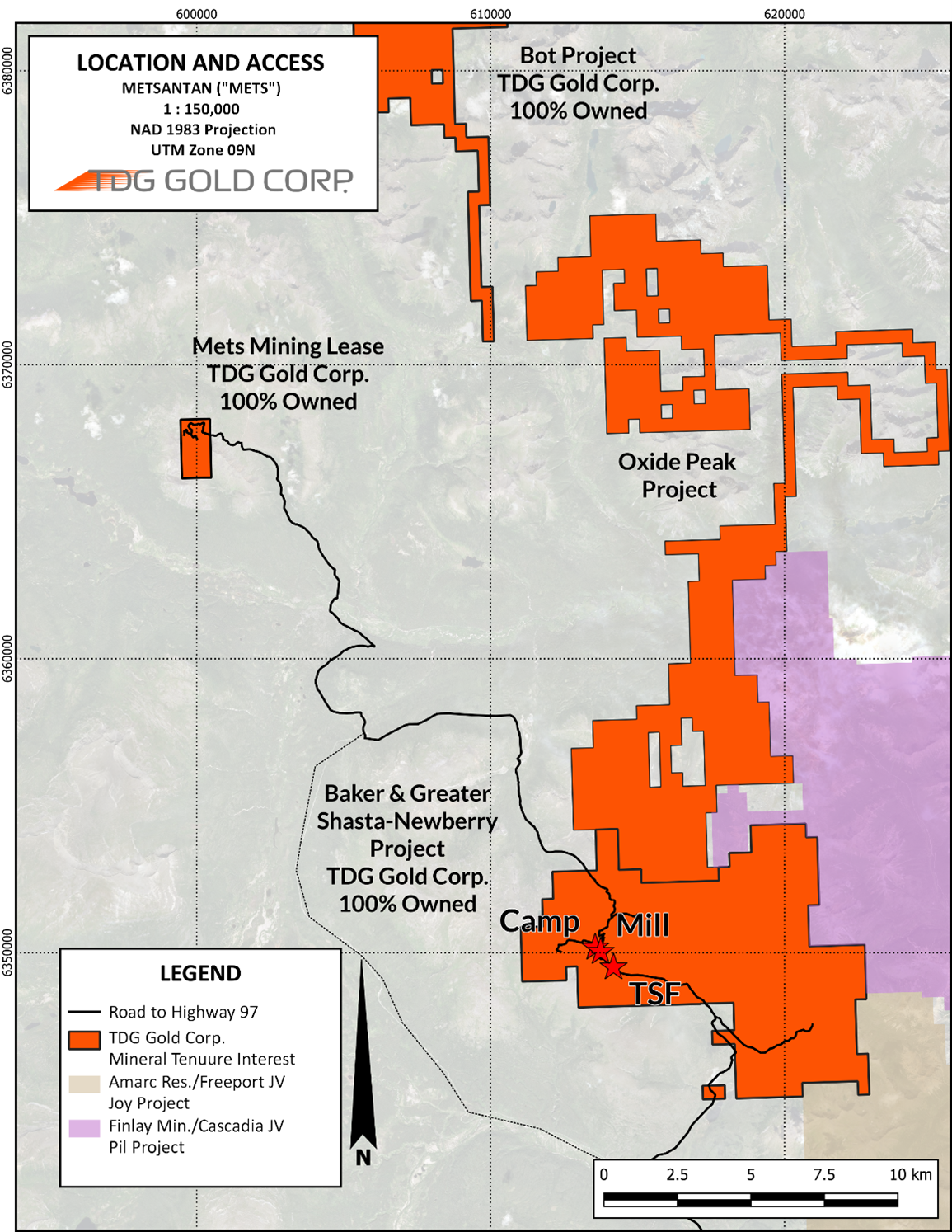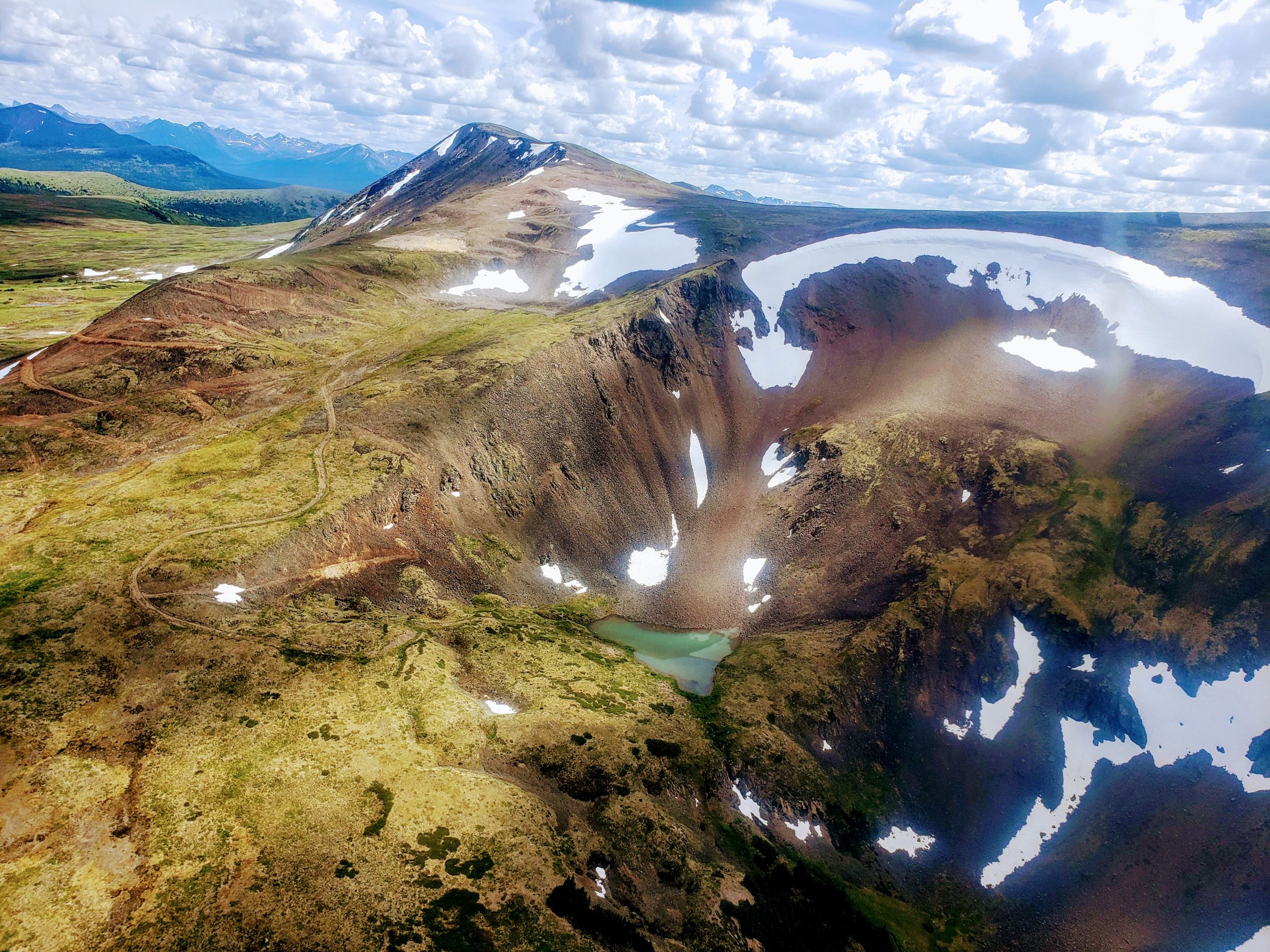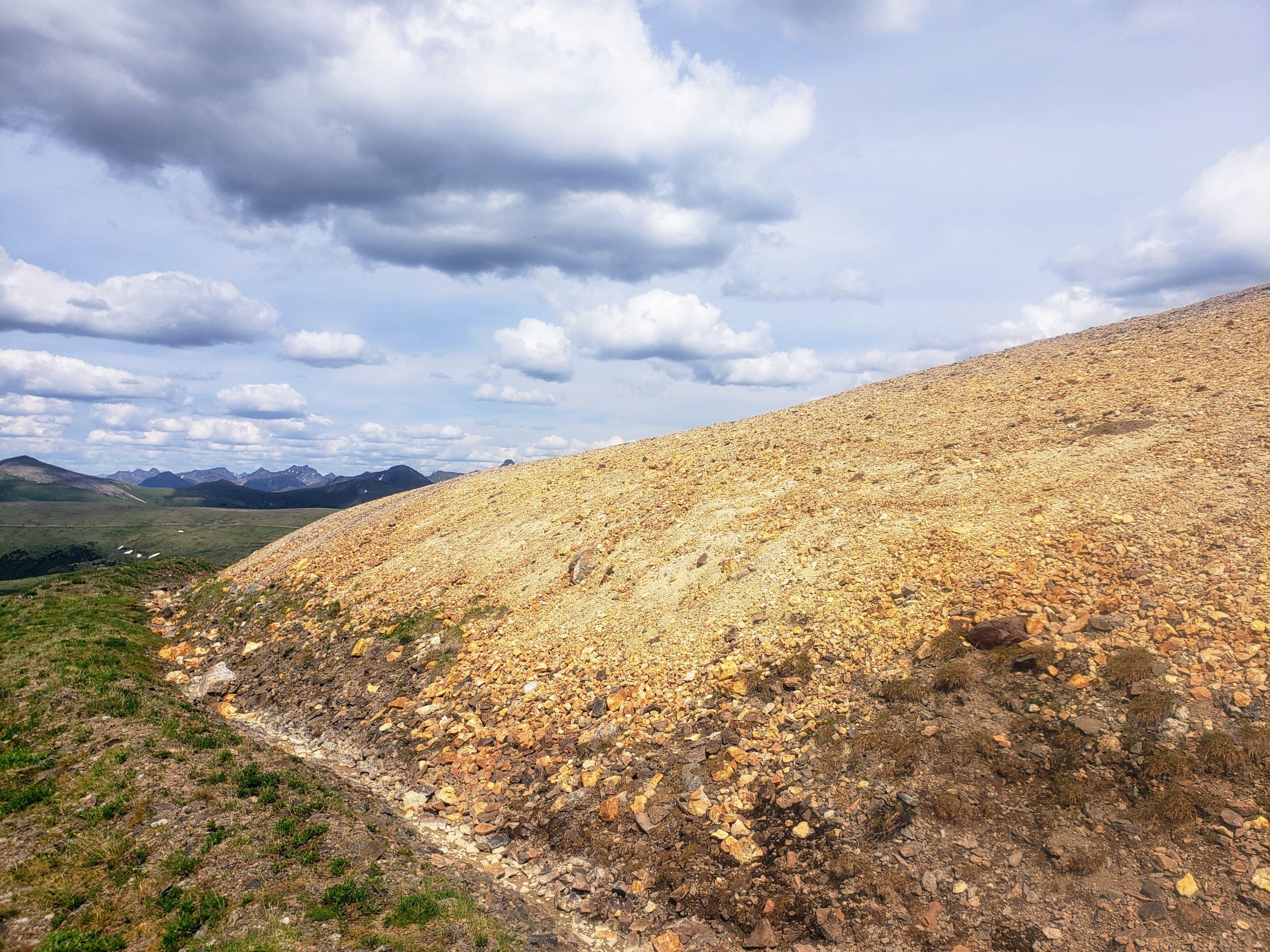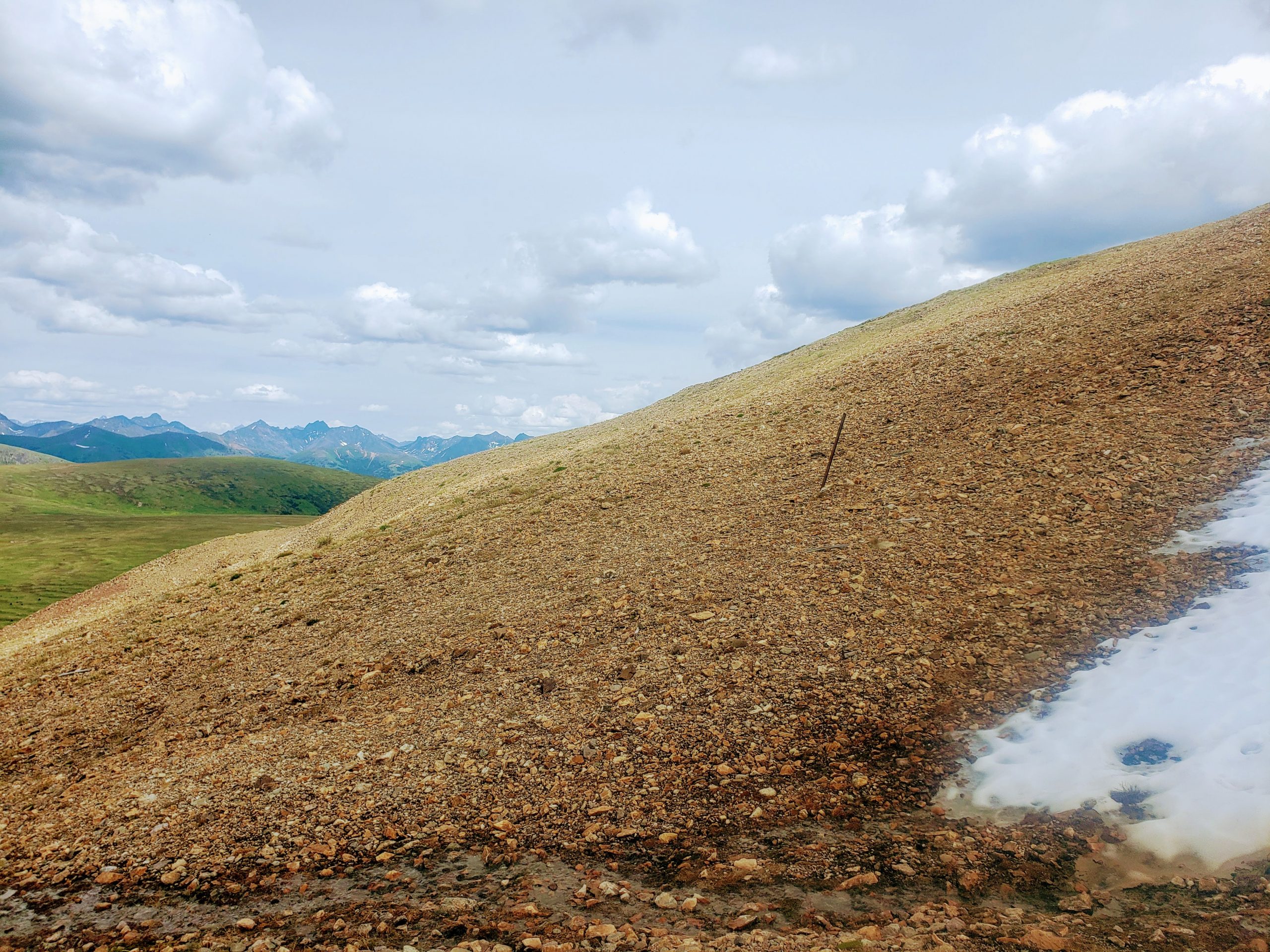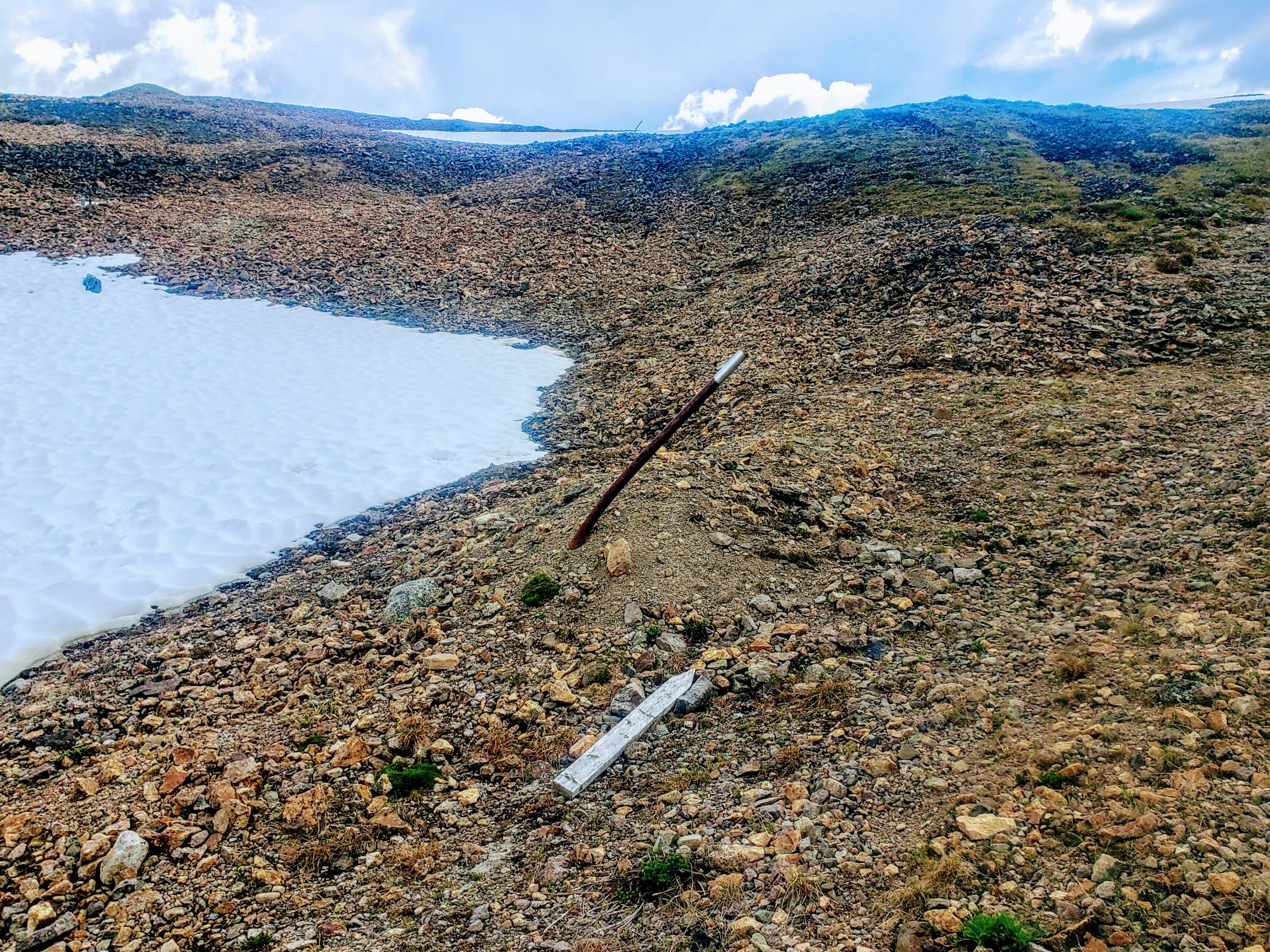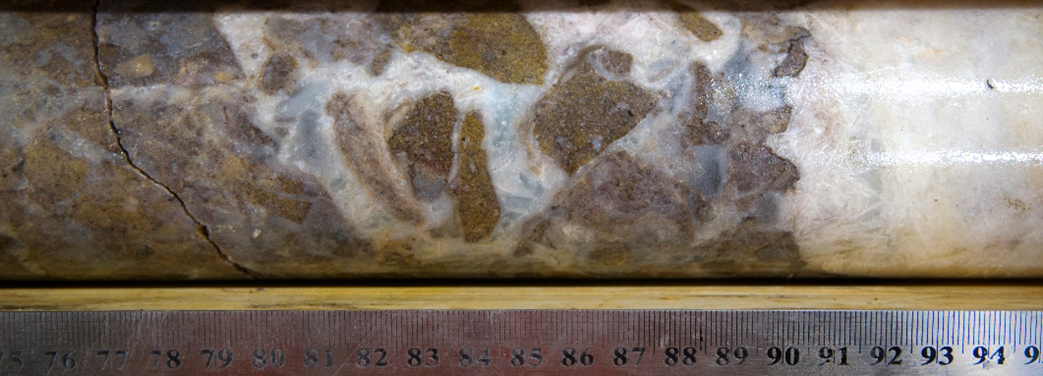Mets Mining Lease
Overview
On December 11, 2020, TDG completed the acquisition of the Toodoggone asset portfolio of Talisker Resources Ltd. – including the Mets mining lease – a 200 hectare mining lease discovered in the 1980s and drilled in the 1980-90s.
Mets is accessible by road 23 km northwest of TDG’s former producing Baker mine. In October 2022, the Mets mining lease was extended for 30-years to April 2053, with the support of the local communities.
The Mets mining lease had ~350 m of underground development work completed in 1992 by Cheni Gold Mines Inc. which reached the defined ore body. Development was halted in late 1992 without extraction or production taking place due to a combination of the land option expiring and the nearby mill closing due to low prevailing metal prices.
Over 8,780 m of historical drilling is reported to have been completed at Mets. On November 1st, 2022, TDG recovered the complete archive of work completed at Mets between 1986-1992, including original laboratory assay certificates, underground schematics and ore reserve calculations.
On December 21, 2022, TDG published an Exploration Target Range for Mets of 593,000 – 642,000 oz gold @ 14.29 – 18.59 g/t Au – see our news release here for more information.
In July-August 2023, TDG completed the first modern diamond drilling program at Mets. The first results from the program were published in September 2023 and demonstrated that shallow, high-grade gold mineralization remains in situ within the A-Zone. Further diamond drill results were published in November and December 2023.
In January 2024, TDG published a series of three news releases identifying potential extensions to the A-Zone and two potential parallel trends based on modern geophysical surveys completed by TDG at Mets in summer 2023.

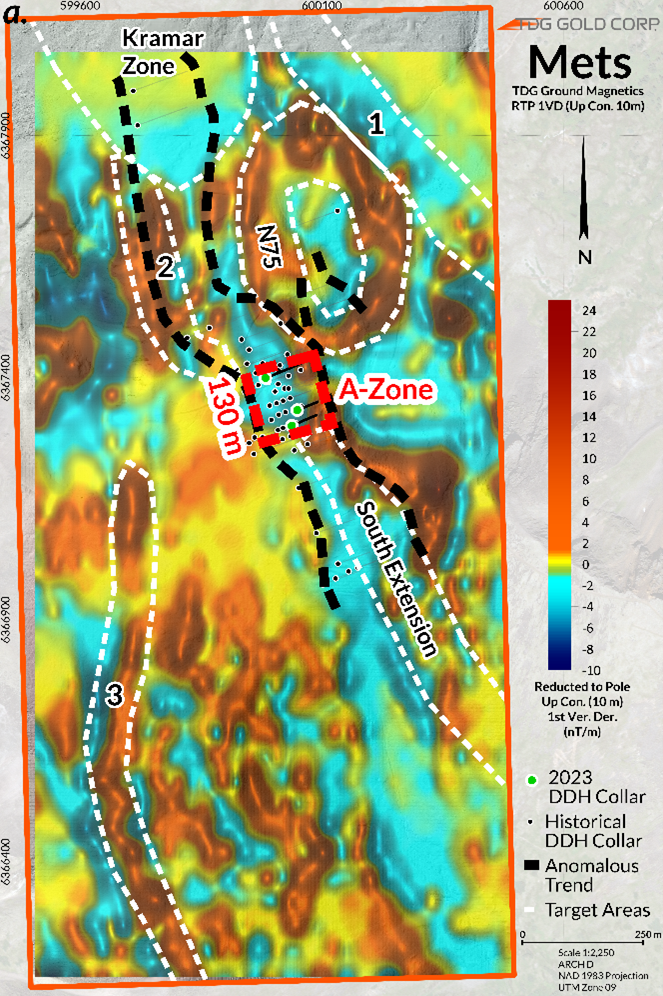
Property Geology & Survey Work
The Mets mining lease is underlain by a succession of subaerial volcanic and volcaniclastic rocks, stratigraphically termed the “Toodoggone Formation” comprising andesitic or dacitic compositions and associated epiclastic rocks. The Mets structure is a quartz-barite breccia that appears to track the geological contact between tuffaceous dacite (hanging wall) and potassium feldspar porphyritic andesite (footwall). Mineralization associated with the breccia is historically described as Au dominant, Ag subordinate (i.e., high Au/Ag ratio) occurring as free gold along margins of quartz and/or barite grains with trace amounts of electrum, argentite and/or tetrahedrite.
Drillhole MT23-001 intercepted the volcanic sequence as predicted by TDG’s geological modelling and intersected the quartz-barite breccia (see image below) at the contact between the dacitic and andesitic volcanic rocks at the expected depth. The mineralized hydrothermal breccia is described as angular dacite clasts supported in a coarse-grained subhedral quartz and bladed barite crystal matrix, with trace visible very fine-grained sulfides (pyrite and galena) present in quartz-barite veining, on vein selvages and in vugs. Alteration can be described as argillic/silicic proximal to the Mets structure.
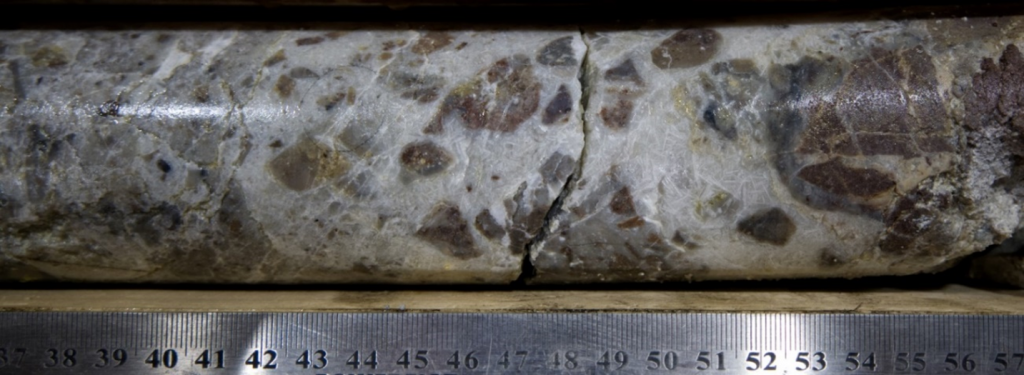
In summer 2023, TDG completed Ground Magnetic (“Mag”) and Very Low Frequency Electromagnetic (“VLF-EM”) surveys covering the entire Mets mining lease.
TDG published the initial results of the surveys in November 2023 followed by 3D interpretations in a series of news releases published in January 2024.
In combination, TDG’s high-resolution geophysical surveys appear to characterize well the known mineralization within the A-Zone. The surveys also provide evidence that limited historical drilling within this trend appears to have been located too distal and/or too shallow to intersect the interpreted geophysical anomalies.
TDG has used the information and interpretation to identify potential northern and southern extensions to the A-Zone. TDG has also identified two potential parallel trends (southwest and northeast) and a ring-shaped geophysical feature (‘Ringo’) suggestive of an alteration feature rimming an intrusive or volcanic center. The potential parallel trends at Mets have never been drill tested.
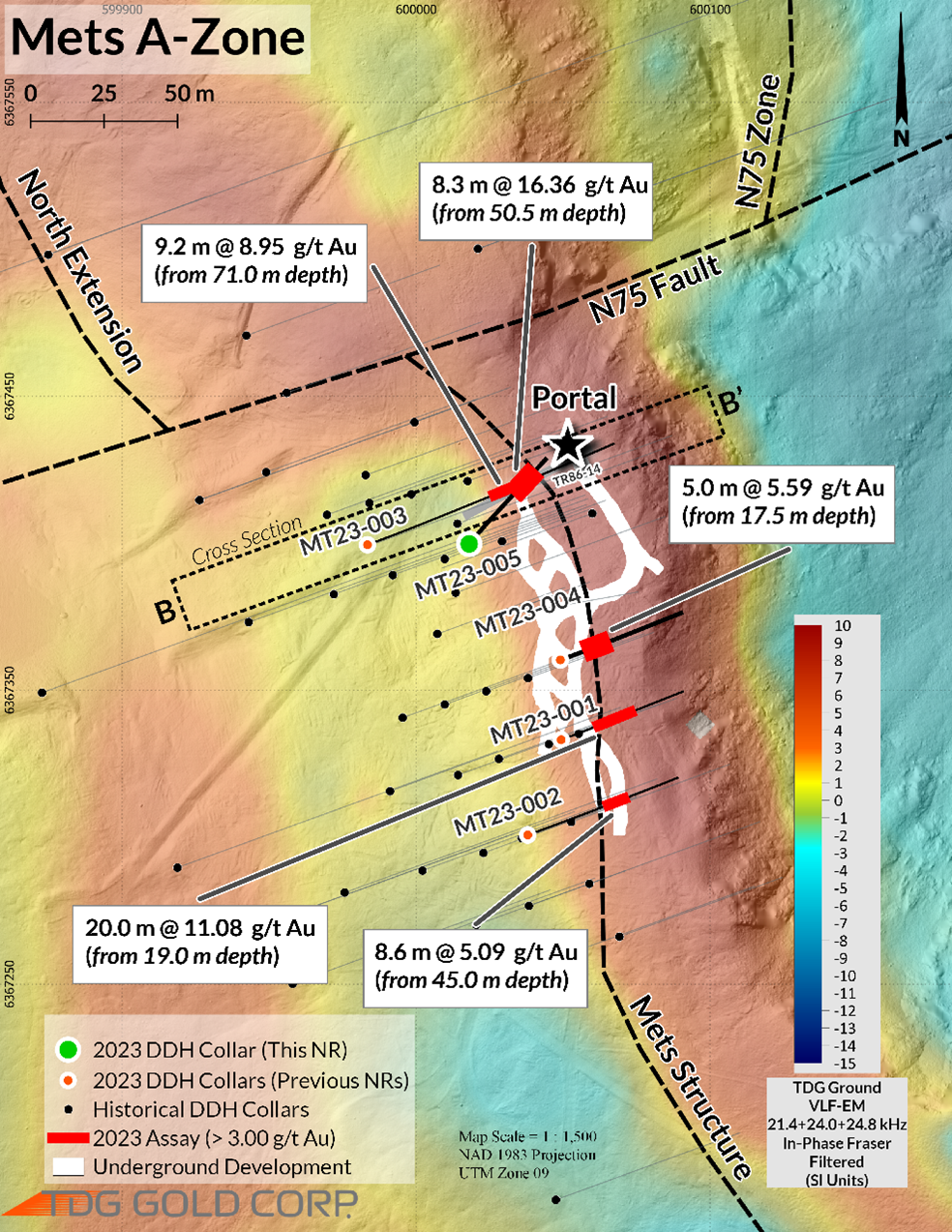
Modern Diamond Drilling (HQ, Oriented)
In July-August 2023, TDG commenced the first modern diamond drilling at Mets since exploration and development ceased at the project in 1991.
TDG has completed HQ, oriented diamond drilling to test the continuity of mineralization within the Mets A-Zone and also the controlling structures of the mineralization. Initial drill results were published in September 2023 and included 20.0 metres of 11.08 g/t Au from 19.0 metres downhole depth reported in MT23-001 (see TDG news release September 7th, 2023).
Results from four additional diamond drillholes were published in September, November, and December 2023 including MT23-005 which intersected 8.3 metres of 16.4 g/t Au from 50.5 metres depth.
Summary of TDG’s 2023 diamond drill results (see associated notes within the news releases):
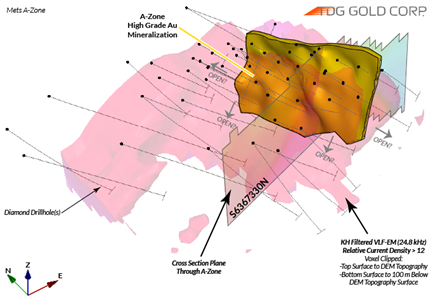
Mets A-Zone
The well-understood portion of the Mets A-Zone high-grade Au mineralization is hosted in hydrothermal quartz-barite breccia(s) at/or adjacent to a structurally disrupted lithological contact between the dacite (hanging wall) and andesite (footwall). It can be conceptualized in 3D as a ‘sheet’ of high-grade Au mineralization sub-parallel to the lithological contact which remains open in both directions and at depth (see image). The sheet of mineralization appears to be steeply west dipping, near surface and has a gentle plunge (~16°) to the north.
The high-grade mineralized sheet coincides with two geophysical features. Firstly, using a VLF-EM survey, the response is defined by a relative charge density of ~>12 using the Karous-Hjelt (“KH”) filtered 24.8 kHz frequency (see image below) and is described as a north-trending, plunging anomaly. Secondly, using ground magnetics survey data with the response calibrated by drillhole data, the high-grade sheet coincides with a magnetic susceptibility low, which may represent the destruction of mafic minerals during the course of alteration and mineralization (see image below).
Through historical recompilation and modern geophysics, a second alteration/breccia envelope was rediscovered west of the main A-Zone trend (see images). This zone is only partially evaluated by historical drilling, remains open at depth, and shares the same geophysical signatures as the main A-Zone trend. An evaluation of the continuity of this second breccia/alteration zone is ongoing and may represent further dimensionality in endeavors expanding the potential size of the A-Zone.
